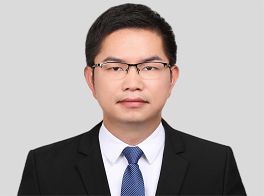Faculty

Dr. Xiaohu Wu received his Ph.D. degree from South China University of Technology (SCUT), Guangzhou, China, in 2013 and joined the School of Microelectronics, Southern University of Science and Technology (SUST) in 2022, as a Research Associate Professor. Before joining SUST, Dr. Wu worked as a postdoctoral fellow at University of California, Davis, USA.
Dr. Wu has been working on the microwave/millimeter-wave radars and circuits, and his research interests mainly include but not limited to the design theory and applications of microwave passive circuits, the active array modules, the microwave/millimeter-wave radar sensors and their applications to the non-contact vital sign detection, and the vital sign detection/identification. These research works are widely used in the field of Smart Home, Wise Information Technology of Med (WITMED), Home-Based Elderly Care, etc. Dr. Wu has published more than 40 papers in the international academic journals and conferences, and more than 10 patents.
The Microsystems for Ubiquitous Sensing, Intelligence, and Communication (MUSIC) Lab at Southern University of Science and Technology (SUSTech) is currently looking for outstanding students/researchers to join us. Potential opportunities include Undergraduate interns, Master students, PhD students, postdoctoral researchers, and Visiting Scholars. Our research is focused on the microwave/millimeter radar sensors and their applications to the vital sign detection. Interested individuals are welcome to email a copy of his/her CV to the following email address, with the subject titled “Research position application <Position, Name>”.
Contact:wuxh@sustech.edu.cn
Education
2013, Ph.D. in Electromagnetic Field and Microwave Technology, South China University of Technology, Guangzhou, China
2008, B.Eng. in Information Engineering, South China University of Technology, Guangzhou, China
Employment
2022.06-Present, Research Associate Professor, Southern University of Science and Technology, Shenzhen, China
2021.12-2022.06, Visiting Scholar, Southern University of Science and Technology, Shenzhen, China
2017.10-2021.08, Postdoctoral Fellow, University of California, Davis, USA
2015.03-2017.09, Assistant Professor, Nanjing University of Information Science and Technology, Nanjing, China
2013.07-2014.09, System Engineer, East China Institute of Electronics, Hefei, China
Research Interest
Microwave/millimeter-wave radar sensors and modules
Research Publications
[1] Xiaohu Wu* and Xiaoguang Liu, “A magnetless 4-port circulator and its microstrip implementation,” IEEE Transactions on Circuits and Systems II: Express Briefs, pp. 969–973, vol. 69, no. 3, Mar. 2022.
[2] Xiaohu Wu*, Mahmoud Nafe, Alejandro Álvarez-Melcón, Juan Sebastián Gómez-Díaz, and Xiaoguang Liu, “A non-reciprocal bandpass diplexer,” International Journal of RF and Microwave Computer-Aided Engineering, pp. 1–6, Mar. 2021.
[3] Xiaohu Wu*, Mahmoud Nafe, Alejandro Álvarez-Melcón, Juan Sebastián Gómez-Díaz, and Xiaoguang Liu, “Frequency tunable non-reciprocal bandpass filter using time-modulated microstrip λ/2 resonators,” IEEE Transactions on Circuits and Systems II: Express Briefs, pp. 667–671, vol. 68, no. 2, Feb. 2021.
[4] Xiaohu Wu*, Yingsong Li, and Xiaoguang Liu, “High-order dual-port quasi-absorptive microstrip coupled-line bandpass filters,” IEEE Transactions on Microwave Theory and Techniques, vol. 68, no. 4, pp. 1462-1475, Apr. 2020.
[5] Alejandro Álvarez-Melcón, Xiaohu Wu, Jiawei Zang, Xiaoguang Liu, and Juan Sebastián Gómez-Díaz, “Coupling matrix representation of nonreciprocal filters based on time modulated resonators,” IEEE Transactions on Microwave Theory and Techniques, vol. 67, no. 12, pp. 4751–4763, Dec. 2019.
[6] Xiaohu Wu*, Xiaoguang Liu, Mark D. Hickle, Dimitrios Peroulis, Juan Sebastián Gómez-Díaz, and Alejandro Álvarez-Melcón, “Isolating bandpass filters using time-modulated resonators,” IEEE Transactions on Microwave Theory and Techniques, vol. 67, no. 6, pp. 2331–2345, Jun. 2019.


